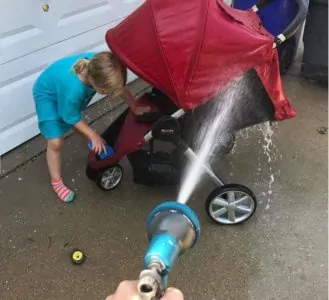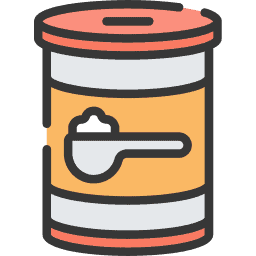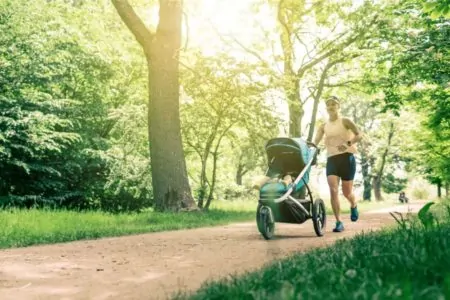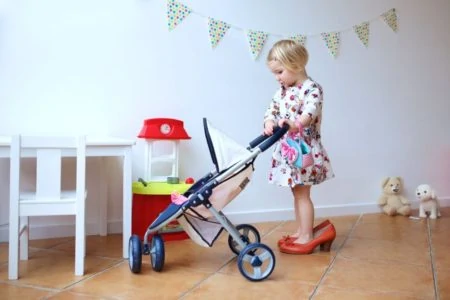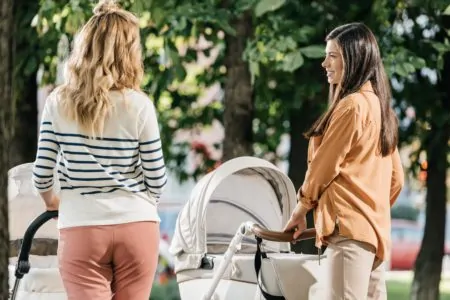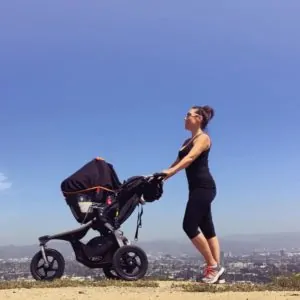While cleaning a stroller feels like just another chore on an endless to-do list, ignoring it leads to rust, squeaky wheels, and nasty germs. The good news? It is easier than you think to bring that sparkle back.
We will break down exactly how to deep clean your stroller, remove stubborn mold, and keep it rolling smoothly for years to come.
Key Takeaways
- Clean regularly to prevent germ buildup and keep mechanical parts smooth.
- Tackle the fabric, frame, wheels, and accessories as separate steps.
- Use gentle, baby-safe soaps and avoid harsh chemicals that could damage materials.
- Dry the stroller completely before folding to prevent mold and rust.
Why You Should Keep It Clean
Babies have developing immune systems. They also love to touch everything within reach and immediately put their hands in their mouths. Since you likely use your stroller on a daily basis, it quickly becomes a magnet for germs, old food, and dirt. Regular cleaning keeps your baby safe and protects your investment.
How Often Should You Clean It?
Don’t let the grime pile up. The longer you wait, the harder the job becomes. Try to give the stroller a quick once-over after every few uses. If you are in a rush, just brush off the wheels and wipe down the snack tray.
Taking care of the little messes immediately means you won’t have to do a deep clean nearly as often.
How to Clean a Stroller
We have broken this down by section so you can tackle it piece by piece.
1. The Fabric Areas
What You Need
- Vacuum cleaner with hose attachment.
- Clean microfiber cloths.
- Soft toothbrush or fabric brush.
- Lukewarm water.
- Baby-safe soap.
- Disinfecting baby-safe wipes.
Dealing With Mold and Mildew
Take Note
If you store your stroller in a damp garage or shed, mold spores can settle on the fabric. This is a health hazard, so tackle it immediately.
Step 1: Ventilation
Take the stroller outside. Wear a mask to avoid inhaling spores while you work.
Step 2: Brushing and Treating
Use a stiff brush to knock off loose mold. If spots remain, apply lemon juice and salt to the area.
For larger outbreaks, mix two parts water with three parts white vinegar in a spray bottle. Soak the area and let it sit before washing with soap.
If your stroller’s care label permits it, you can use a diluted bleach solution (two tablespoons of non-chlorine bleach to one quart of water).
Be Careful
The Cleaning Process
Step 3: Check the Manual
Always read the manufacturer’s instructions first. Some fabrics are machine washable, while others are “spot clean only” to protect flame retardants or water-repellent coatings.
Step 4: Vacuum
Use your vacuum’s hose attachment to suck up crumbs from the seams. Pay close attention to the crease where the seat meets the backrest; this is a crumb trap.
Step 5: Suds Up
Mix a small amount of baby-safe soap with lukewarm water. Avoid making it too bubbly, as excess suds are hard to rinse out.
Step 6: Scrub
Dip your cloth in the water, wring it out, and wipe down the fabric. Use a soft toothbrush to gently scrub stains.
Step 7: Rinse and Wipe
Use a fresh damp cloth (no soap) to wipe away the suds. Leftover soap residue can actually attract more dirt later, so be thorough.
Step 8: Disinfect
Wipe hard surfaces and handles with a disinfectant wipe to kill lingering germs.
Step 9: Air Dry
Open the stroller fully and let it dry in the sun. Sunlight is a natural disinfectant and helps speed up the process.
2. Cleaning the Frame
Remove accessories like cup holders and trays before you start. It is easier to clean those separately in the sink.
What You Need
- Dishwashing soap.
- Warm water.
- Scrubbing brush or toothbrush.
- Sponge.
- Soft towel.
Cleaning Method
Step 1: Wipe Down
Dip your sponge in soapy water and wipe the entire frame. Start from the handle and work your way down to the legs.
Step 2: Scrub the Nooks
Use a toothbrush to dislodge mud or debris caught in the brake mechanisms or folding joints.
Step 3: Remove Scuffs
If you see plastic scuffs, a non-abrasive scrubbing pad or a melamine sponge (Magic Eraser) can work wonders on the frame.
Step 4: Dry Immediately
Metal parts can rust, and water spots look messy. Dry the frame quickly with a soft towel or microfiber cloth.
3. Cleaning the Wheels
Your stroller wheels take the most abuse. Sand, salt, and hair can get stuck in the axles, making the stroller hard to push.
What You Need
- Stiff brush.
- Warm soapy water.
- Silicone lubricant spray.
Cleaning Method
Step 1: Detach the Wheels
If your model allows it, pop the wheels off. This gives you access to the axle where hair and string get tangled.
Step 2: Scrub and Rinse
Brush off large chunks of dried mud. Use soapy water and a brush to scrub the tires and rims. Rinse with a hose or a bucket of clean water.
Step 3: Inspect
Check pneumatic tires for air pressure. Look for glass or thorns embedded in the rubber.
Step 4: Lubricate
If the wheels are squeaky, apply a silicone-based lubricant to the axle.
Warning
4. Cleaning the Accessories
Check if your snack tray or cup holder is dishwasher safe. If so, toss them on the top rack.
If not, wash them in the sink with hot soapy water. Medela wipes are great for a quick wipe-down on the go since they are safe for surfaces that touch mouths.
Don’t forget the storage basket. Detach it and shake it out vigorously outside. If it is really grimy, hose it down or hand wash it in the bathtub.
Top Tips for Cleaning a Stroller
Here are a few professional tricks to make the job easier:
- Reassemble damp: If you stripped the fabric off the frame to wash it, put it back on while it is still slightly damp. Fabric shrinks when dry, so this makes reattaching snaps and zippers much easier.
- The skewer trick: Use a wooden skewer or toothpick to dig gunk out of tight crevices around the folding mechanism.
- Watch the heat: Never store your stroller next to a radiator or in a hot car trunk for long periods. Extreme heat can warp plastic parts.
- Avoid rust: If you get caught in the rain or clean with water, dry the metal parts immediately. Rust is the enemy of a smooth ride.
- Spot test: Before using a new cleaner, test it on a hidden part of the fabric (like under the seat) to ensure it doesn’t bleach the color.
- Lubricate sparingly: When oiling the wheels, a little goes a long way. Wipe away excess spray so it doesn’t drip onto the floor.
